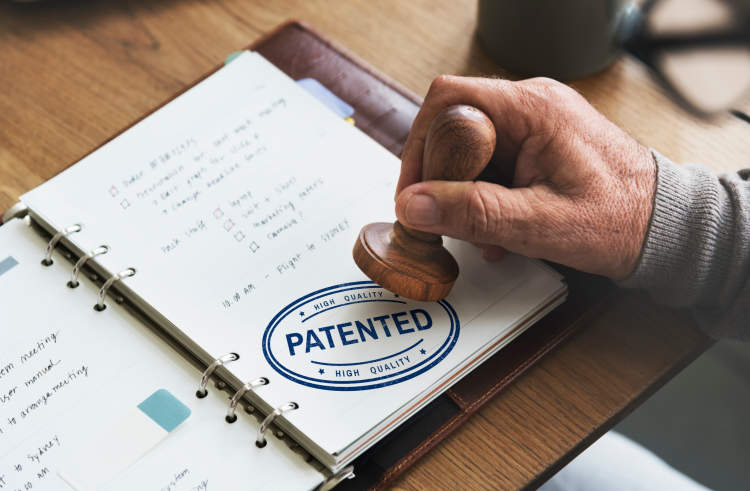As an international researcher working in the US, there are a wide range of intellectual property (IP) rights and regulations to consider. Navigating and understanding the US IP landscape can seem like a daunting task, but understanding these rights is essential for protecting and capitalizing upon your work in the long-term.
This guide will provide an overview of the US IP system and how it applies to international researchers, so you can make better decisions and protect your work. From copyright and trademark to patent and licensing considerations, get informed and take the necessary steps to guard your brand.
Understanding US Intellectual Property Law
As an international researcher in the US, understanding Intellectual Property (IP) rights is essential. Without a clear understanding of the US Intellectual Property Law, you will not have the adequate resources to protect your inventions, products, services, and research output. This guide serves to provide a detailed overview of the Intellectual Property Law in the US.
Intellectual Property is the legal protection of creations of the mind, such as music, inventions, literary works, and more. The US Intellectual Property Law defines the protection of Intellectual Property and gives people the right to enforce it. It consists of four main areas: patents, copyrights, trademarks, and trade secrets.
Patents
A patent is a grant of a property right to an inventor from the US government to prevent others from making, using, or selling the invention without permission. Patents also help the inventor by giving their invention a certain level of recognition and respect. In most cases, a patent lasts between 10 and 20 years, depending on the type of invention.
Copyrights
A copyright is a legal right granted to the creator of creative works such as books, songs, and films, allowing them to reproduce, distribute, or make changes to their work without getting permission from the creator. Copyright protection generally lasts for the lifetime of the creator plus an additional 70 years after their death.
Trademarks
Trademarks are words, symbols, logos, phrases, or a combination of these elements that are used to identify a particular product or service. Owners of trademarks are able to protect the distinctive characteristics of their brand from use or imitation by another party. In the US, trademarks are registered with the US Patent and Trademark Office (USPTO) and last for 10 years, with the option to renew.
Trade Secret
A trade secret is any confidential information that is valuable to a business and is not known to the public. Trade secret laws protect a company’s confidential information from being disclosed or used without permission. In the US, trade secrets are protected by state laws, but they can also be protected under federal laws.
Understanding Intellectual Property rights in the US can be challenging. However, researching the applicable laws is essential for ensuring your creations and works are properly protected and safeguarded. With a clear understanding of the US Intellectual Property Law, you can navigate these issues confidently and protect your intellectual property properly.
Conducting research abroad presents special challenges, not least among them the need to navigate unfamiliar legal and ethical terrain and clarity around intellectual property. Understanding international research agreements is critical for any international researcher coming to the US. Here is a guide for successfully navigating intellectual property rights as an international researcher in the US.
Understand Intellectual Property Rights Basics
Intellectual property rights (IPR), also commonly referred to as intellectual property (IP), are the exclusive rights which are granted to creators of an original work in the respective jurisdiction. Depending on the jurisdiction, these rights can be granted to inventors, authors, and other creators of original works. Some of the most common types of IPR include copyrights, patents, trademarks, and trade secrets.
It is essential to be familiar with the rules and regulations around IPR in the US. While each state has its own set of laws, the US patent system is regulated by the US Patent and Trademark Office (USPTO) and the Copyright Office is a part of the US Library of Congress. International researchers need to beaware of the nuances that come with researching in the US as compared to their home country.
Knowledge of Contracts and Agreements
International research agreements vary depending on the country in question. Additionally, it is important to be aware of international intellectual property conventions such as the Berne Convention, Rome Convention, and the TRIPS agreement. Each of these agreements have their own rules which may differ from the US IPR regulations, and thus it is important to be knowledgeable about each one in order to properly navigate any potential intellectual property dispute.
Furthermore, some US institutions may have specific research agreements with a particular country or institution. It is important to be aware of these agreements and the obligations they impose on researchers. This will avoid any potential conflicts between the applicable international legislation and the contractual provisions.
Although the initial stages of research compliance can seem daunting, there are steps that can be taken to ensure that researchers are aware of their obligations. Researchers should be familiar with the applicable law and research agreements in order to avoid any conflicts with local laws. Additionally, research agreements should be reviewed with legal counsel, and any potential intellectual property disputes should be adequately addressed through the appropriate legal channels.
If an intellectual property dispute arises, it is important to consult with experienced intellectual property attorneys in order to ensure that the dispute is resolved efficiently and cost-effectively. They will help researchers to identify potential issues and work to guarantee precise compliance with applicable international laws.
Conclusion
Navigating the intellectual property rights landscape can be difficult for international researchers in the US. However, understanding the basics of copyright law, trademark law, patent law, and trade secrets are essential to staying within the legal boundaries of intellectual property. Further, it is important to consider the economic and philosophical interests that shape international intellectual property rights policies and practices.
By keeping these considerations in mind, international researchers can ensure they are making informed decisions that protect their intellectual property interests well. Ultimately, the more thoroughly an international researcher understands the nuances of intellectual property rights, the more secure their intellectual property will be in the US.




